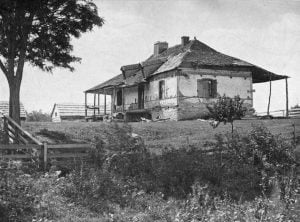Establishment of Fort Smith in 1817
The white population in Arkansas in 1817 had increased to several thousand, whose protection, as well as that of the Cherokee people living in that territory, from the continued hostilities of the Osage, required the establishment of a military post at the western border dividing the white settlements from the Osage. From Saint Louis came further news of threatened hostilities by the Osage near Clermont’s Town, and a report that Major William Bradford with a detachment of United States riflemen, and accompanied by Major Long, topographical engineer, had left that city for the purpose of establishing a military post on … Read more


